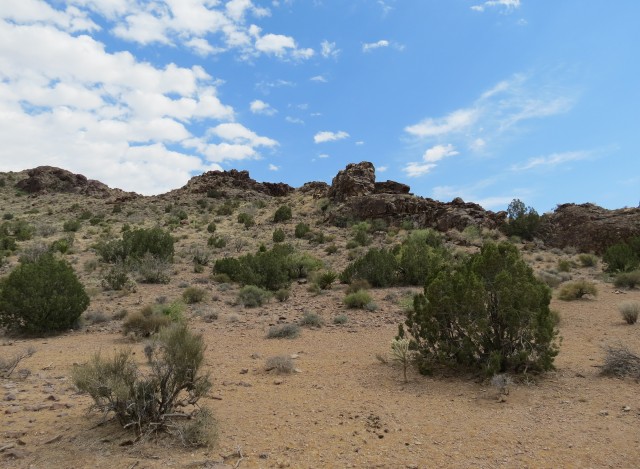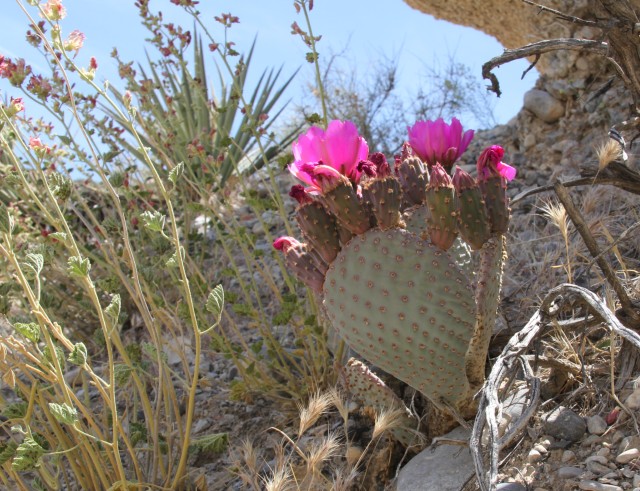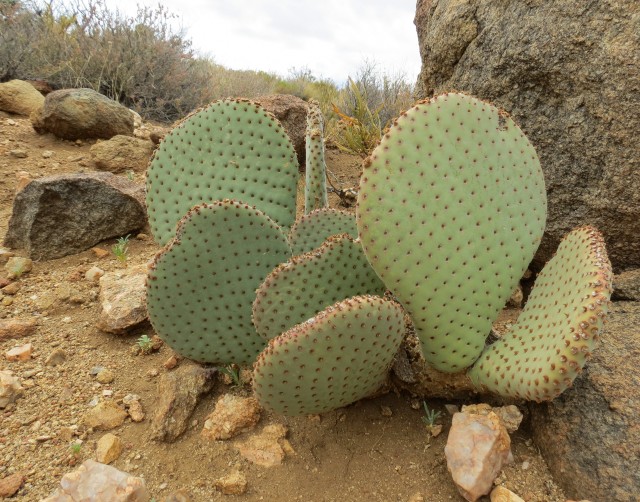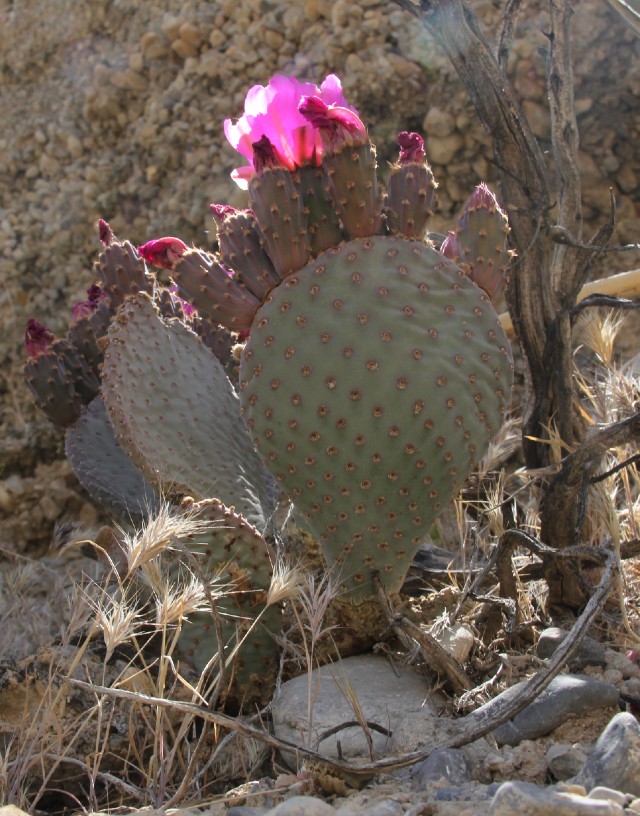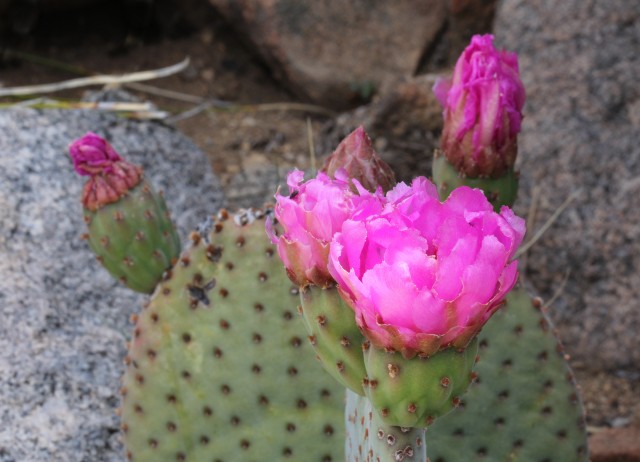While hiking through the Arizona and Nevada desert, I often seen this classic arid-land plant. Found in the southwestern United States, it occurs mostly in the Mojave, Anza-Borrego, and Colorado Deserts, as well as in the Colorado Plateau and northwest Mexico.
Beavertail Cactus looks like the Prickly Pear Cactus, but does not have long spines. This is a medium-to-small species that grows to about a foot tall, with pink-to-rose colored flowers. This plant can be found in chaparral, desert and grassland. It grows in well drained soil composed of sand, gravel, cobble and even on boulders.
A single plant may consist of hundreds of fleshy, flattened pads. These gray-green, jointed stems are wide and flat resembling the tail of a Beaver. Although they lack spines, they have many small barbed bristles, called glochids, that easily penetrate the skin.
The Cahuilla Native Americans used this plant as a food staple. Its buds were cooked or steamed, and then were eaten or stored. Its large seeds were ground up to be eaten as mush. The Desert Tortoise enjoys eating the juicy pads and the magenta-colored flowers of this plant.
Beavertail is usually the first cactus in the Mojave Desert to bloom, flowering as early as February and through May.

